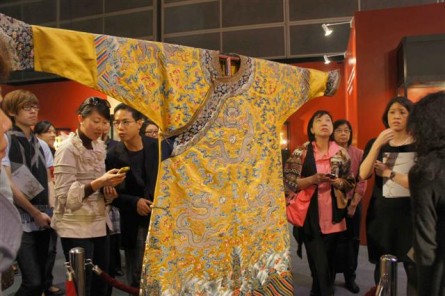
Chinese ceramics are among the most sophisticated in the world. Admired by collectors for their impressive visual and tactile qualities, they are also copied by potters the world over who wish to recreate the special qualities of these wares. The beauty of Chinese ceramics is a direct result of the advanced technology and high quality raw materials used by Chinese potters from as early as the Shang dynasty. However, this technology can be difficult to understand, especially for non-scientists. This lecture will introduce and explain the materials and techniques used to create some of the most famous types of Chinese ceramics in a way that is accessible to anyone with an interest in learning more about why these ceramics are considered to be the highest achievement of the potter's art.
Dr. Stacey Pierson is currently a Visiting Assistant Professor in the Department of Fine Arts at The University of Hong Kong. Her permanent position is at the School of Oriental and African Studies at the University of London, where she is Lecturer in Chinese Ceramics and Museum Studies. She was previously the Curator of the Percival David Foundation at the same institution and has published a number of catalogues and books on the subject of Chinese ceramics, including Chinese Ceramics: a Design History (2009).
Participants are welcome to bring one ceramic item for Dr. Peterson's comments after dinner.
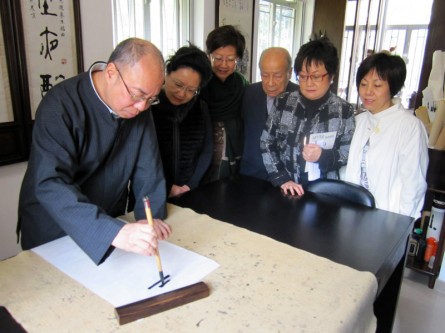
Ou Dawei is one of Hong Kong's renowned Chinese calligraphers and seal carvers. Born in Guangzhou in 1947, he studied Chinese calligraphy and seal carving with distinguished artist Wu Zifu since 1961. Presently, he is an art advisor to the Hong Kong Arts Development Council (Visual Arts Session) as well as part-time lecturer in the Department of Fine Arts of The Chinese University of Hong Kong and the School of Professional and Continuing Education of The University of Hong Kong.
A permanent honorary chairman of the Chinese Art Association Mo-she, his publications include the "Selected Seals by Ou Da Wei" series, "Flowing from the Inkwell – Selected Brushwork by Ou Da Wei", and "2003 Realm of Black and Red – Works by Ou Da Wei".
Ou's works are widely exhibited in Hong Kong and overseas and have been selected for numerous Hong Kong Art Biennial exhibitions. He was awarded the Hong Kong Urban Council Fine Arts Award for Calligraphy (1989) and Seal Engraving (1998) and the Hong Kong Arts Development Council Award for Artistic Development (1998).
During this morning's visit, Ou Dawei will introduce members to the fundamentals of Chinese calligraphy and the intricacies of seal carving. From his demonstration, members will observe Ou’s skill and talent for putting a new twist to these traditional skills.
With sales results increasingly escalating at recent auctions, Sotheby's senior specialist, Edie Hu, will guide us on a tour to see highlights of their Hong Kong Spring Auction 2011 Exhibition. The forthcoming sale will once again bring to the market exceptional treasures of high quality and provenance. Following our guided tour, members are welcome to stay and view other galleries and exhibits at their leisure.
Do come and join us.
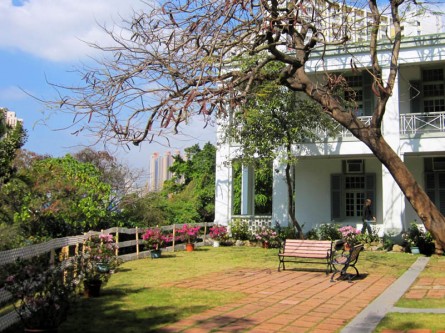
Traditionally, mainstream visual art was limited to paintings and sculptures. Nowadays, its horizon has expanded to include many other modes of expressions, with installation art the most popular among them. Understanding installation art involves stretching the mind and the senses of the viewer. In this lecture, Choi Yan Chi, one of Hong Kong’s foremost installation artists will offer insights for a better appreciation of this art form.
Choi has been actively committed to promoting contemporary art in Hong Kong for over 25 years. Joining Baptist University in 2002, she helped to establish the University’s first Academy of Visual Art where she is currently an Assistant Professor. Her accomplishments are numerous. She was a grantee of Asian Cultural Council Fellowship in 1990 and a participant in the First Asia Pacific Triennial in Australia in 1993. That same year, she held her solo exhibition in the state gallery of Berlin, Haus der Kulturen der Welt. A co-founder of 1A Space, she was invited by the University of Southern California as Distinguished Provost’s Visitor in 2008. In 2009, she curated the exhibition “Green, through the Kai Tak River” for October Contemporary Hong Kong. Her works are widely published internationally.
This lecture will be held at the Academy of Visual Arts at Hong Kong Baptist University. The academy was the site of the former Royal Air Force Officers’ Mess that is now listed as a grade II historical building of early 20th century colonial architecture. Along with the lecture, there will be an opportunity to tour the various art studios, computer laboratory and art gallery.
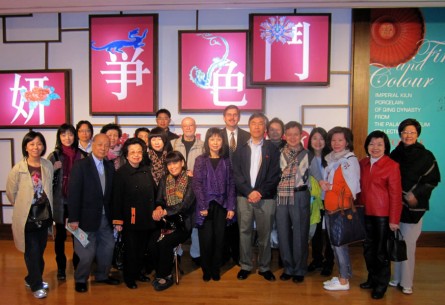
OVERVIEW:
We are privileged to have Professor Peter Lam, Director of the Art Museum of The Chinese University of Hong Kong, guide an educational tour of the exhibition entitled Fire and Colour: Imperial Kiln Porcelain of Qing Dynasty from the Palace Museum Collection at the Macao Museum of Art. During the tour, Professor Lam will speak about 18th century imperial ceramics – imperial patronage, the Jingdezhen imperial factory, kiln supervisors, and technical terms on ceramics.
This exhibition showcases over 100 works from the Palace Museum’s collection of porcelains produced by imperial kilns during the reigns of emperors Kangxi, Yongzhen and Qianlong (1662-1795). They are divided into four themes – “The Beauty of Pattern”, “The Beauty of Shape”, “The Beauty of Glaze” and “The Beauty of Craftmanship”. Each represents and chronicles the technical and artistic advances produced in this glorious period of Chinese pottery and porcelain.
After viewing this impressive collection, we will enjoy lunch in one of the fine restaurants that have marked Macau as a culinary destination for food lovers in Asia.
In the afternoon, we will tour some of the temples, churches and squares – heritage relics that have contributed toward Macau’s designation as a UNESCO World Heritage site in 2005. From the local guide, we will learn about the history of Macau from its origin as a fishing village to becoming the oldest permanent European settlement in East Asia, its colonization by Portugal and the eventual reunification to China. The cultural encounters between the Chinese and Western civilizations are reflected in the fusion of its cuisine, art and architecture. Likewise, the effects from its exchange of cultural, spiritual, scientific and technical influences are considerable.
RESOURCE PERSON:
A graduate of the Percival David Foundation of Chinese Art, School of Oriental and African Studies, University of London, Professor Peter Lam is both an art historian and museum professional. His scholarly works on Chinese ceramics, calligraphy rubbings and the decorative arts are widely published. For the past three and a half decades he has been the Director/Professor of the Art Museum, The Chinese University of Hong Kong. Professor Lam is a long standing member of the Min Chiu Society of prominent collectors in Hong Kong, a council member of the Chinese Society of Ancient Ceramics in Beijing, an Honorary Research Fellow of the Palace Museum, Beijing and an Honorary Member of the Hong Kong Oriental Ceramic Society.
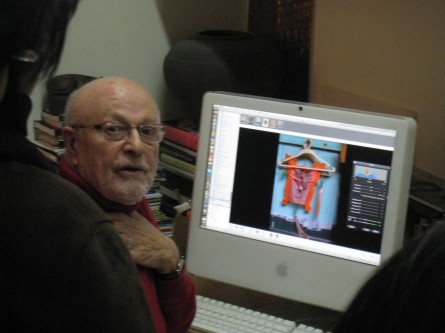
“Everything has its beauty but not everyone sees it.” – Confucius
Norman de Brackinghe's digital paper prints direct viewers' attention to details often overlooked and thereby, create the extraordinary from the ordinary. Vivid colors, painterly quality, strong composition, and a sense of balance and peace constitute his signature style. His popular photographic works betray his love of abstract expressionists like Pollock, Rothko, Motherwell and Rauschenberg. With subject matters mostly of distressed surfaces or close-up shots, and without the use of Photoshop or a paintbrush, his abstract photography fascinates not only art lovers, but also painters and graphic designers.
Norman de Brackinghe has lived in Hong Kong since 1976, working as the director of an international publishing company for twenty years. He comes from a family steeped in graphic arts and publishing and has worked with Allen Lane of Penguin Books and later Paul Hamlyn. Since his arrival in Hong Kong, he has been involved in design and design education while actively promoting art. He has held over 20 solo exhibitions on both his watercolour landscapes and abstract photography in Hong Kong and Europe. Norman has also exhibited in many group shows in Europe, Hong Kong and the Asian region. Images of his photography can be viewed at his website www.debrackinghe.com. His studio is small but well equipped with a lovely view overlooking Happy Valley.
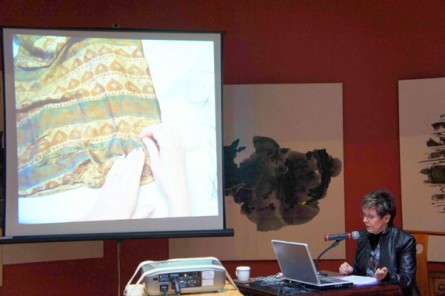
Chinese embroidery was well established domestically by the time it garnered a highly regarded international reputation along the silk route more than two millennia ago. Embroidered embellishments linked both the powerful and the meek to Heaven, Earth and each other with eloquent symbols of authority and good fortune. What shaped its practice and development?
This presentation will reference material and textural evidence from historic Chinese sources and make comparisons with Western experience to explore major social, religious, political and economic circumstances that influenced the development of embroidery styles and stitches in China. A brief overview of embroidery practices from pre-imperial times, through the reforms of the Southern Song, until the end of dynastic rule, will provide a historic perspective before considering today’s circumstances. There will be a glimpse at replicas from antiquity. In conclusion, we will consider the difference between reproductions and forgeries.
Diana Collins is a textile conservator with interests in the production of Chinese textiles. For over 25 years she has conserved textiles from private, museum and commercial collections in her textile conservation practice in Hong Kong. She taught the textiles conservation component of integrated art conservation and restoration certificate courses at The Hong Kong University’s SPACE and has lectured on this subject and the history of Chinese textiles in China, Southeast Asia, Australia and the U.S. She is a contributing editor of HALI magazine and has written articles and reviews for 'Arts of Asia' and 'Orientations' magazines. Collins conceived and coordinated the first international conference on the history of Chinese textiles, “Chinese Textiles: Technique, Design and Patterns of Use” which was held in Hong Kong in 1995 in conjunction with the Oriental Ceramic Society exhibition “Heaven’s Embroidered Cloth”.
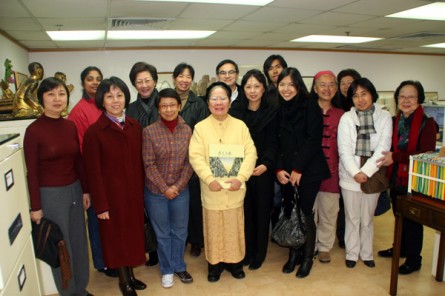
Founded in Hong Kong in 1970 with its first issue published the following year, 'Arts of Asia' is one of the premier magazines in the field of Asian arts and antiquities. With subscribers in 93 countries, it showcases the cultural pride and heritage of Asia to the world.
Publisher and Editor, Tuyet Nguyet Markbreiter is a woman of vision, passion and dedication. Born in South Vietnam, she studied journalism in France and the United States and began her career working for English language newspapers and business magazines in Vietnam. Leading a women’s delegation from Vietnam to Manila in 1959, she was commissioned to write about the 10th anniversary of the Chinese mainland refugees when she met her husband Mark Markbreiter, a British architect. Since then, she has made Hong Kong her home. Traveling extensively in Asia, she saw the need to promote a better understanding of Asian people and their culture, their arts and history rather than politics, war and destruction. Hence, 'Arts of Asia' was born.
Now forty years later, her 5,000 sq. ft. office is filled with art pieces from almost every country in Asia, including China, Vietnam, Nepal, Burma, India, Japan and Korea. Tuyet Nguyet Markbreiter will share the background of these exquisite pieces and the stories behind their acquisitions, whether from international auctions, private dealers or artists themselves. Across from the office is the library and study centre where major auction catalogues for the past 27 years can be found. Numerous publications and art albums on Asian art are also well displayed and categorized.
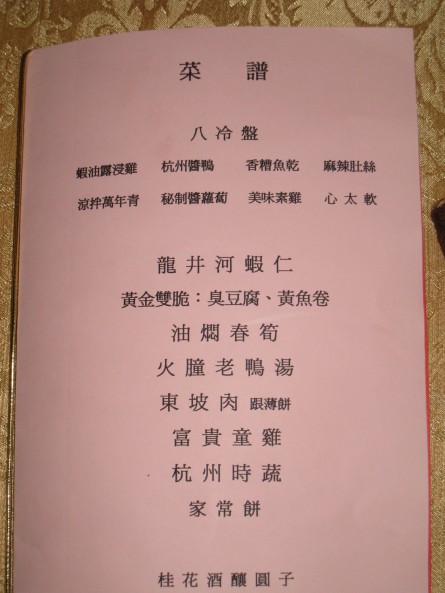
Hangzhou cooking is considered the prime representative of Zhejiang cuisine, one of the eight major schools of Chinese cuisines. Characterized by beautiful presentations, Hangzhou dishes use fresh ingredients that offer sweet and delicate flavors. While increasingly popular as nouvelle cuisine in Mainland China, it has remained relatively understated here.
In Hong Kong, Hangzhou Restaurant (杭州酒家) serves traditional and authentic dishes such as Braised Pork Belly (東坡肉), Steamed Chicken with Stuffing (富貴雞) and West Lake Fish in Vinegar Sauce (西湖醋魚). Each dish carries its own historical legend, which is tied to the folklore and culture of China. Owner and Chef Ng Sui Hong (吳瑞康) originates from Hangzhou. His father Ng Kwok Leung (吳國良), a highly respected guru of Hangzhou cuisine, was the General Manager of the famous Hangzhou Restaurant in Hangzhou and Executive Chef of Tin Heung Lau (天香樓) in Hong Kong.
We shall savour a special menu from the Chef's recommendations in this relatively low-key restaurant whose business flourishes solely by the word-of-mouth from its satisfied clients. Celebrating its 5th anniversary, the Hangzhou Restaurant was awarded a one star rating by 'Michelin Guide Hong Kong & Macau 2010'. For our culinary evening, Chef Ng will share with us some of his superb culinary tips.

The guqin (古琴)is a Chinese musical instrument of the zither family with over 3000 years of history. Developed as an elite art form by Chinese literati, the guqin was favored for the aesthetics of its music that emphasized elegance, subtlety and serenity. It is listed at the top of the four traditional arts followed by qi (ancient form of chess), calligraphy and painting. In 2003, the guqin, together with its music was proclaimed by UNESCO as one of the Masterpieces of the Intangible Cultural Heritage of Humanity.
Dr. Tse Chun-Yan (謝俊仁) is a distinguished guqin musician and composer in Hong Kong. A harmonica player from the age of six, he later studied guzheng and Chinese music theory and composition. He learned to play the guqin in 1983 and since then, he has given numerous public performances in Hong Kong and abroad. Dr. Tse graduated from the Faculty of Medicine of The University of Hong Kong in 1973. After retiring from his medical profession in 2005, he obtained his Ph.D in Ethnomusicology in 2009 from The Chinese University of Hong Kong, researching on guqin scores of the Ming and Qing Dynasties. He now teaches at the Music Department of The Chinese University of Hong Kong and the School of Music of the Hong Kong Academy of Performing Arts.
Dr. Tse will give an introductory talk on this classical instrument and perform several exemplary pieces including "Running Water" (流水), "Three Variations on the Plum Blossom" (梅花三弄), "Memories of an Old Friend" (憶故人), and "Drunken Elation" (酒狂). To enhance this afternoon’s literati music program, Anita Wong, Curator of UMAG and a connoisseur of Chinese tea, will offer participants freshly brewed premium Chinese teas from her private collection and impart insights on the appreciation of Chinese tea.



